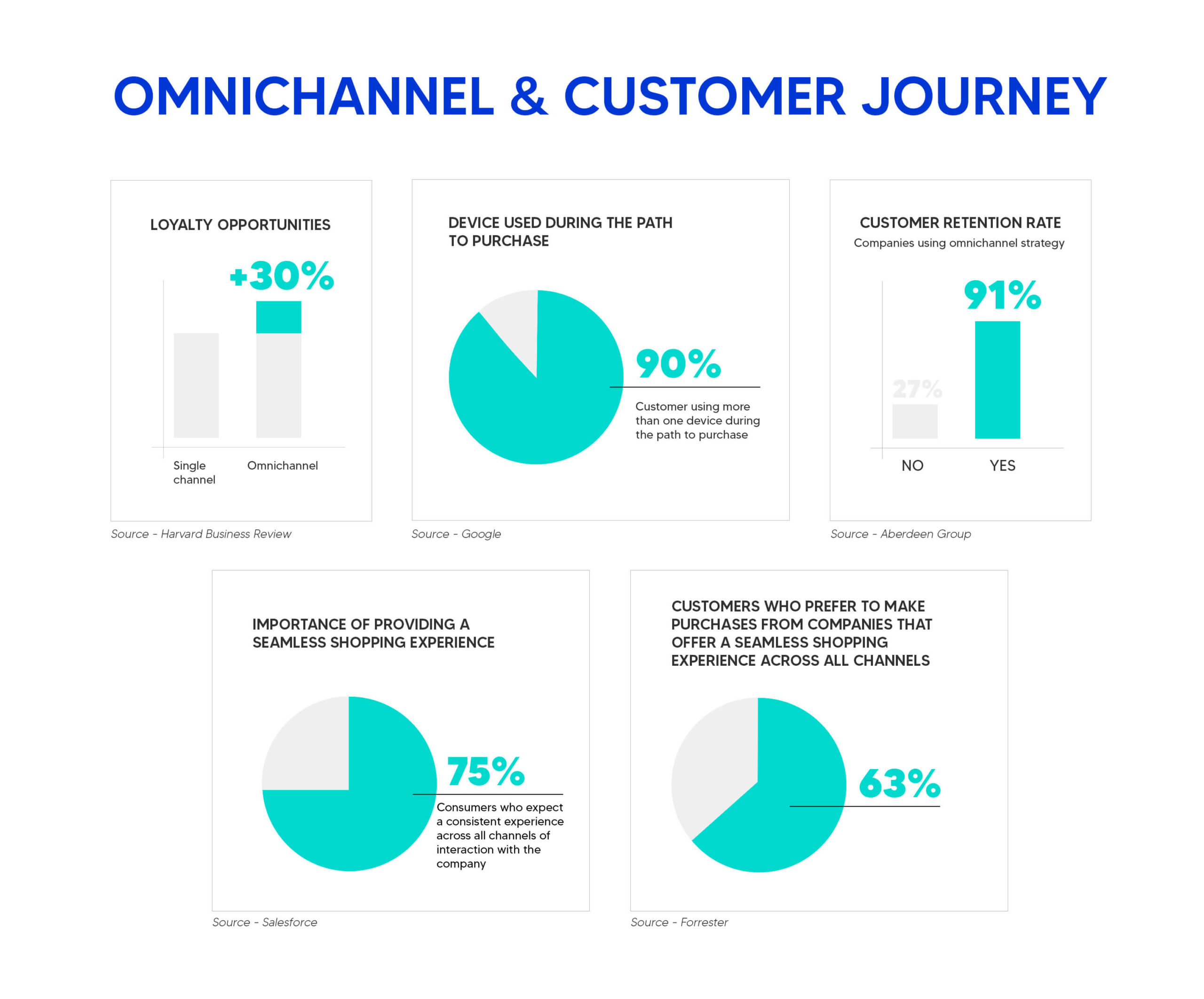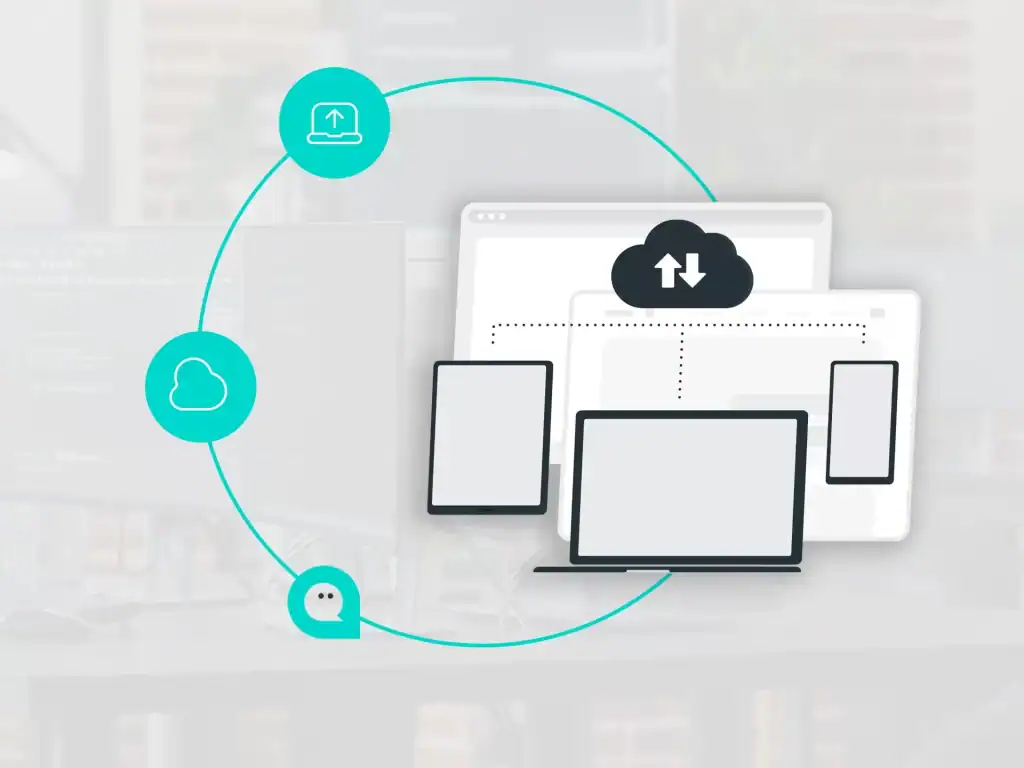As the world transforms and becomes increasingly connected and digitalized, it becomes crucial for companies to provide a seamless and continuous experience to their customers. To do this, the choice of many companies is to rely on omnichannel, through various strategies to develop an effective omnichannel customer journey, so as to improve the customer’s approach to the brand and increase the loyalty of their user base.
What is an omnichannel customer journey?
An omnichannel customer journey is a set of interactions a customer has with a company through various contact channels, such as physical stores, websites, mobile apps, social media, e-mail, and phone support. The main goal of an omnichannel experience is to provide consistent and personalized service across all channels, putting the customer at the center of every business strategy.
The benefits of an omnichannel approach
An omnichannel approach offers numerous benefits for both companies and customers:
- Improved customer experience: an omnichannel experience enables customers to interact with the company smoothly and consistently across all channels, increasing customer satisfaction and loyalty.
- Increased sales: a positive customer experience leads to increased sales by being able to offer customers products and services tailored to their needs and preferences.
- Data collection: an omnichannel approach enables the collection and analyze customer dataacross all channels, empowering companies to optimize their marketing and sales strategies.
The omnichannel customer journey in numbers
- According to research by Harvard Business Review, customers who have interactions with a company across multiple channels are 30 percent more likely to become loyal customers than customers who interact only through a single channel.
- Research conducted by Google revealed that 90 percent of consumers use more than one device during the path to purchase, which demonstrates the importance of providing an omnichannel experience to meet the needs of customers on the go.
- According to a report by Aberdeen Group, companies that use an omnichannel strategy have a 91 percent customer retention rate, compared to 27 percent for companies that do not use an omnichannel strategy.
- A Salesforce report revealed that 75 percent of consumers expect a consistent experience across all channels of interaction with the company.
- Research by Forrester revealed that 63 percent of customers prefer to shop from companies that offer a seamless shopping experience across all channels.

Examples of successful omnichannel customer journey
Companies that have adopted an omnichannel approach have seen significant improvements in customer satisfaction and sales. Here are some examples of success:
Amazon
Amazon is an example of excellence in theomnichannel customer journey. The e-commerce giant seamlessly integrates its online platform with devices such as Kindle and Echo, offering a comprehensive and consistent customer experience. In recent years, Amazon has expanded its offline presence, opening physical stores, such as Amazon Go and Amazon Books, and acquiring the Whole Foods supermarket chain.
Sephora
Sephora, the cosmetics store chain, has successfully developed an omnichannel experience for its customers. Through the mobile app, customers can access tutorials and beauty tips, book in-store appointments, and manage their accounts. In addition, the physical stores offer a wide range of services, such as makeup lessons and personalized consultations, which perfectly complement the online experience.
Starbucks
The Starbucks coffee shop chain has created an effective omnichannel experience through integration between the mobile app, loyalty program, and physical stores. Customers can use the app to order and pay, earn loyalty points and receive personalized offers, while the app allows them to locate the nearest store and view the available menu.
How to create an effective omnichannel customer journey?
To create an effective omnichannel experience, some basic guidelines must be followed:
- Know your customer: it is important to understand your customers’ needs, preferences and behavior by analyzing the data collected on different channels. This will enable them to offer a personalized experience and anticipate their expectations.
- Integrating channels: it is critical to integrate the different contact channels so that customer information is easily accessible and up-to-date. This will enable consistent and timely service across all channels.
Tools for channel integration
There are several tools and technologies that can help companies integrate their channels, such as CRM (customer relationship management) systems, marketing automation software and e-commerce platforms.
- Optimize communication: it is important to use the communication channels best suited to the needs of customers and the characteristics of the product or service offered. For example, social media can be used to promote new products and special offers, while e-mail can be used to send detailed information and product updates.
- Monitor and analyze results: it is essential to monitor and analyze the results of omnichannel strategies to check their effectiveness and identify any areas for improvement. This can be done by analyzing the data collected across channels and using specific metrics, such as conversion rate, average order value, and cart abandonment rate.
- Staff training: it is critical that staff are properly trained to handle customer interactions on all channels and deliver an excellent experience. Appropriate training can help improve customer satisfaction, increase loyalty, and consequently increase sales.
XCALLY and the omnichannel Made in Italy
XCALLY, the omnichannel platform for contact centers, enables an effective omnichannel customer journey because of its ease of use and the ability to check call data on the customizable dashboard.
With its intuitive web interface, both customer care specialists and their supervisors can quickly learn how to use XCALLY, enabling them to focus on customer satisfaction, all with anoptimized user experience.






